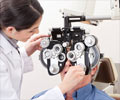Graves' disease patients found that smoking increases the risk of surgical intervention for thyroid eye disease.
- Current smokers had a higher risk of undergoing orbital decompression, strabismus surgery, and eyelid recession surgery
- Former smokers had a lower risk than current smokers, but higher than never smokers
- Smoking cessation can help lower the burden of surgical disease for thyroid eye disease
Study on Graves' Disease Patients: TED Surgery Requirement and Patient Characteristics
The authors conducted a retrospective cohort study on persons with Graves' disease who were registered in the IRIS Registry between January 1, 2013, and December 31, 2020. The key outcome was the requirement for TED surgery, including orbital decompression, strabismus surgery, and eyelid recession surgery. There were 87,774 patients in this study (mean age, 59 years; 81% female).People who Smoke are at Higher Risk of Eye Surgeries
The findings revealed that current smokers had a higher 5-year cumulative likelihood of undergoing orbital decompression (3.7% vs 1.9%; P 0.001), strabismus surgery (4.6% vs 2.2%; P 0.001), and eyelid recession (4.1% vs 2.6%; P 0.001).After controlling for demographic characteristics (age, gender, race, ethnicity, and geographic region), current smokers had a higher risk of orbital decompression, strabismus surgery, and eyelid recession (P 0.001 for all comparisons) than never smokers. Former smokers were more likely to need each of the procedures, but their risk was lower than that of current smokers.
Importance of Quitting Smoking to Improve Eye Health
The authors concluded, “Smoking was associated with increased risk of surgical intervention for TED in the IRIS Registry. Former smokers were at a lower risk than current smokers, supporting the role of smoking cessation in lowering the burden of surgical disease at the population level.”Source-Medindia
















